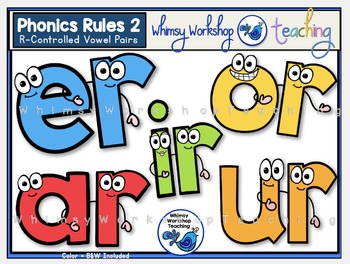

Ask students to find words in the Mini-Charts that make the /air/ sound (p.29- bear, care, dare, share ).Ask, “So, what are some other ways to spell the /or/ sound?” ( a - r, o - a - r, o - r - e, and o-o-r ) When this pattern occurs, the sound of the vowel is changed. Ask, “So how do we usually spell the /or/ sound?” ( o - r ) Say, “There are some other ways to spell the /or/ sound, also, but they are not as common.” Read the words on wall card #3. An r-controlled vowel is a spelling pattern in which a vowel is directly before the letter R.

#R CONTROLLED VOWEL SOUNDS FULL#
In Word Tag ®, players work at their own pace to complete word collections full of rich vocabulary. Word Tag ® allows players to try until they succeed, tailoring content to skill level.įree play and exploration are crucial for learners’ cognitive development, cultivating curiosity and a desire to learn. The syllabic r: Because the schwa + r has no.

Research also demonstrates that games can provide constructive feedback and a feeling of accomplishment. The r-controlled Vowel is a sound with schwa // and /r/ sound next to each other to form the // sound. Word Tag ® repeats word exposure enough times to guarantee retention. Retention significantly increases when kids enjoy their learning experience.Īccording to research, learners need several encounters with a word to add it to their vocabulary. Word Tag ® is designed so kids learn new vocabulary as they earn rewards. Word Tag ® unites learning and fun through gameplay by immersing kids in an open-world adventure where they are able to interact with over 1000 words per year, personalized to their individual learning level. Try our chart with r-controlled vowels below! Illustrated charts that show the most common r-controlled vowels can help children remember them better. Then move to /or/, which can be spelled as or (fork) or ore (adore). So start with /ar/ (car), followed by /er/, which can be represented with three different graphemes er (monster), ir (bird), or ur (surf). As usual, make sure to follow a systematic approach going from the most to the least common r-controlled vowel.

Then ask them if they notice the difference. For example, starting with one syllable words, ask children to pronounce words without r, like can, cat, had, tad, and then ask them to pronounce similar words with r, like car, hard, tar. One of the most useful methods to help children understand how adding r changes a vowel sound is to ask them to compare words with and without r-controlled versions of the same vowels. This means that many of the short, easy to spell and say words that children learn first are r-controlled, so it is extremely important that they understand how an r-controlled vowel changes the sound and pronunciation of words. In fact, 10% of single syllable words contain an r-controlled vowel. R-controlled vowels appear in so many words in the English language that it’s hard to even form a sentence without at least one. The r affects the sound that the vowel makes, turning it into a new sound unlike the long or short version of that same vowel. An r-controlled vowel is simply a vowel that is followed by an r, like the ar in smart, the ir in girl.


 0 kommentar(er)
0 kommentar(er)
